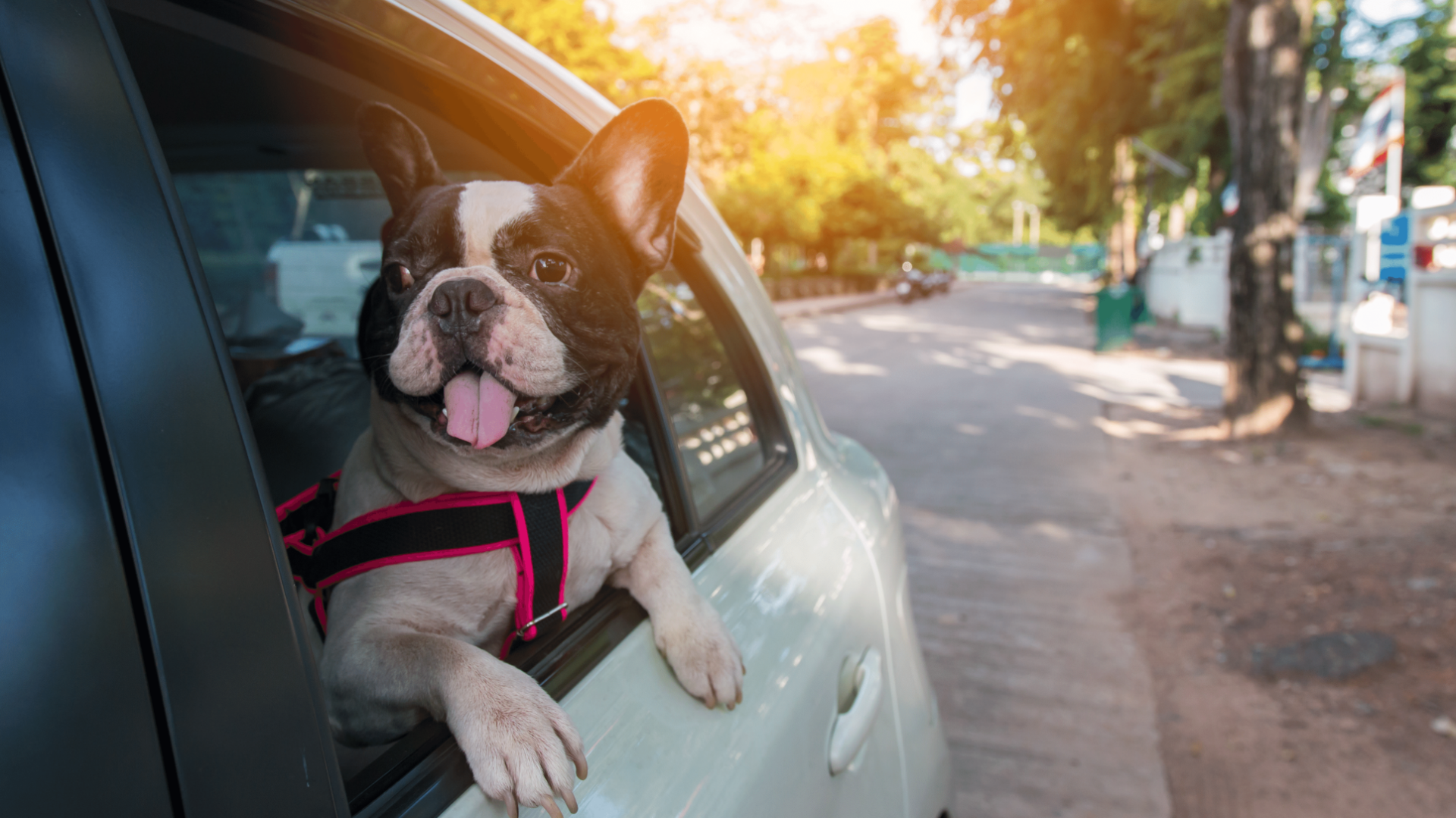The Dangers of Leaving Pets in Hot Cars: Heatstroke in Dogs & More

During the hot days of summer you will often read news headlines such as:
“Phoenix Puppy Dies in Hot Car Outside of Mall!”
“3 Dogs Die After They’re Left in Car During Scorching Heat Wave.”
“2 Dogs Rescued From Hot Car by Las Vegas Police Officers!”
Even if it’s just a quick stop to the store to pick up a few groceries. When your beloved pup is along for the ride, the car should be left running to keep the air conditioner on for the dog. This is an example of being conscientious about pet health and knowing the dangers of heatstroke in dogs left in hot cars. However, the summer heat is hard on pets, people, and automobiles. So you can’t trust that your car won’t stall or some other unexpected event might occur during the short time you are gone.
Sadly, hundreds of pets die every year from being left in a hot car. These unexpected tragedies are absolutely preventable. To be on the safe side for animal care: NEVER leave your pet in a hot car.
Do You Know How Detrimental Heat Can Be to Your Pets?
We sweat to regulate our body temperature in hot weather. The only way dogs are able to regulate body temperature is through panting. Those little-flat faced fur babies such as Pugs, Bulldogs or Shih Tzus will have a harder time cooling off than breeds such as Greyhounds, German Shepherds and Labs because of their shorter nasal passages.
Your veterinarian will explain how detrimental heat can be to your pets; and when you know the serious side effects of leaving your pet in a hot car, you will not do it. Heat damage is detrimental to many areas of a dog’s body including the circulatory system, kidneys, liver, GI tract and central nervous system.
For the circulatory system, excessive heat can damage the lining of blood vessels when blood clots as a response to repair the veins. The blood clotting response will also cause damage to other organs of the body. Sometimes the body does not know whether to bleed or to clot which increases the chances for death or permanent damage.
The kidneys, liver, and GI tract are damaged with micro clotting which injures the function of these organs. Damage to kidneys may cause renal failure. Damage to the liver may cause increased glucose levels. Damage to the GI tract can lead to blood loss through vomit, bloody diarrhoea, and gastric ulceration. In extreme cases, the lining of the GI tract itself can start to pull away.
Symptoms of heat damage to the central nervous system of your dog will present themselves as mild disorientation, depression, muscle tremors, seizures, and even coma.
How Hot Can Your Car Get in Just a Few Minutes?
Cars are like ovens; they quickly get hot and hold heat in.
Did you know that when it is:
72 degrees Fahrenheit outside your car can heat up to 116 degrees within an hour
80 degrees Fahrenheit outside your car can heat up to 99 degrees in 10 minutes
90 degrees Fahrenheit outside your car can heat up to 130 degrees in 20 minutes
Adding to the dangers of being exposed to extreme heat, veterinary specialists will explain how increased anxiety levels in your dog will compound the physical issues that can lead to heatstroke in dogs. Your dog could experience brain damage or even die from heatstroke in as little as 15 minutes when left in a hot car.
No one would wear a fur coat on a sunny day and wearing one inside a car with temperatures over 100 degrees is just cruel. Your fur-baby has a coat that won’t come off – give that some thought!
Does Opening the Car Window Help When Leaving Your Dog in the Car?
It can get dangerously hot inside a car in a hurry and rolling down the windows has been shown to have little effect. The American Vet Association, who has done numerous studies on heatstroke in dogs, has come to the conclusion that opening a car window has little or no effect on how heat builds up inside of cars. Your car is still a heat conductor even with a window cracked or rolled down.
Watch for Heatstroke in Your Pets
The normal temperature for dogs falls in the range of 100.5 to 102.5 degrees Fahrenheit. Thermal injury and heat stroke in dogs happen when body temperatures fall in the range of 106-109 degrees Fahrenheit. Heatstroke in a healthy dog can happen in 15 minutes. Puppies, older dogs, and dogs with underlying health issues are even more prone to heatstroke.
Signs of heatstroke in dogs:
- Excessive panting or having hard time breathing
- Increased heart rate
- Mild weakness
- Stupor
- Drooling
- Collapse
A dog can also vomit, have bloody diarrhoea, and even seizures with a body temperature of over 104 degrees.
It is possible for a dog to fully recover from a heatstroke – IF the sick dog has been noticed early and treated promptly. When heatstroke in dogs remains untreated, full recovery rarely happens. Most dogs will suffer with long term effects of heatstroke when organs have been damaged permanently requiring lifelong treatment.
Chipman Road Animal Clinic: #1 Animal Care Clinic in Lee’s Summit
The long term effect of heat stroke in dogs is serious. If you see heat stroke symptoms in your dog for any reason, contact Chipman Road Animal Clinic hospital immediately for emergency heat stroke recovery. Call: 816-524-1886!
Our excellent veterinarians will care for all of your pet’s health care needs including:
- Animal Hospital/Emergency care
- Dental care
- Flea and Tick control
- Microchipping
- Personalised medical care
- Puppy and Kitten care
- Spay and Neuter
- Vaccinations
- Wellness exams
Chipman Road Animal Clinic is the #1 animal care clinic serving all of Lee’s Summit, MO and the surrounding areas. Our open door policy allows you to stop in when you need advice or emergency help. No appointment is needed. We are located at 211 NW Chipman Road in Lee’s Summit, MO 64063. Call us at
816-524-1886.


